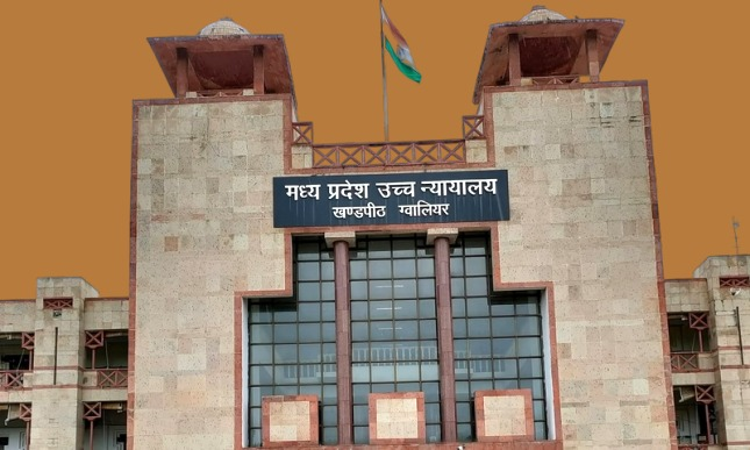- Home
- /
- High Courts
- /
- Madhya Pradesh High Court
- /
- 'Threat To Public': MP High Court...
'Threat To Public': MP High Court Upholds Detention Of Man Who Allegedly Fired Pistol In Residential Area, Uploaded Video Online
Jayanti Pahwa
5 Sept 2025 3:48 PM IST
The Madhya Pradesh High Court dismissed a man's plea challenging his detention, who was seen in a social media video uploaded by him, allegedly open firing his pistol in a residential area.In doing so the court observed that the order passed by the District Magistrate Gwalior under National Security Act detaining him for three months, was justified as the man was threat to public order and...
The Madhya Pradesh High Court dismissed a man's plea challenging his detention, who was seen in a social media video uploaded by him, allegedly open firing his pistol in a residential area.
In doing so the court observed that the order passed by the District Magistrate Gwalior under National Security Act detaining him for three months, was justified as the man was threat to public order and the video created fear in the residents living in the area.
A division bench of Justice Anand Pathak and Justice Pushpendra Yadav said:
"So far as grounds of detention are concerned, total nine cases were registered against the petitioner in which two cases were under Section 307 of IPC and seven cases were under Arms Act in different police stations. His video indicates that he opened fire in residential area challenging the police and uploaded video creating terror and fear amongst residents living in the vicinity. He was a threat to public order. Therefore, he was rightly detained for NSA. Some times offences are grievous and some times, the manner in which person behaves (with criminal antecedents) also creates fear amongst people. Therefore, for maintaining public order, peace and tranquility in the region, this is a restraining step required in attending set of facts".
The petitioner, residing in Koteshwar Colony, contended that he was falsely implicated in nine cases, out of which he was found not guilty in five. He argued that the impugned order of detention was passed by the authorities based on these cases. It was also claimed that the petitioner was 'a student and due to such detention order his education is adversely getting affected, which is detrimental to his future life'.
Further, the petitioner argued that there was a delay of four days between the passing of the detention order and the reporting of the matter to the state government. The detention order was passed on November 28, 2024, whereas the matter was reported to the State Government on December 2, 2024.
Additionally, it was contended that under Section 3(5) of the NSA, the State was required to forward the report to the Central Government within seven days. However, in this case, the report was forwarded within nine days, thereby violating the mandate under Section 3(5) of the NSA.
The State, however, contended that the petitioner was a habitual offender and was engaged in criminal activities. It was also alleged that before passing the detention order, all relevant procedures under the Act were duly followed. The State also contended that the District Magistrate had rightly passed the detention for three months, 'looking to the possibility of disturbing law and order situation in the area'.
One of the cases registered against the man alleged that the petitioner "fired in public and uploaded the video of firing on social media".
The bench noted that "all proceedings were undertaken by the respondents within time frame". The bench observed that the petitioner was detained on November 28, 2024, and a report was sent within four days.
The bench further noted that there were two holidays in between the detention of the petitioner and the reporting to the state government, and thus, the mandate of Section 3(4)- that the report needs to be forwarded without delay- was duly followed.
It was also observed that Section 3 (5) of the NSA provides seven days' time to the State Government to forward such a report to the Central Government; in this case, the report was forwarded within four days. The court recorded that the matter was placed before the Advisory board within 18 days from the date of detention, while the timeline provided under Section 10 of the NSA was three weeks. "Therefore, placement of case was within limitation under Section 10 of the NSA", the bench opined.
The bench also noted that per the mandate of the Act, the advisory board has to take a decision on detention within seven weeks from the date of detention. In the present case, it was recorded that the Advisory board took its decision within 43 days, on January 10, 2025.
"If this Court goes into the nature of allegations, then it may go in the realm of subjectivity because authorities always assess the situation and thereafter decide to act accordingly," the court added.
Relying on the case of Rameshwar Shaw v. District Magistrate, Burdwan & Ors (1964), the bench reiterated, "past conduct or antecedent/history of the person on which the authority purports to act, should ordinarily be proximate in point of time and should have a rational connection with the conclusion that the detention of the person is necessary".
Noting that the petitioner's past conduct was 'already haunting him', the court observed that his action of openly firing his pistol in public and uploading the video sent a message of threat, prompted the authorities to act proactively.
"In cumulative analysis, after going through the reply and documents filed by the respondents, it appears that petitioner was rightly detained for his conduct," the court said.
The court dismissed the petition.
Case Title: Shivang Bhargav v State of Madhya Pradesh (WP NO. 12933/2025)
Citation: 2025 LiveLaw (MP) 184
For Petitioner: Advocates Rohit Tiwari and Rajesh Kushwah
For Respondent: Government Advocate Sohit Mishra



